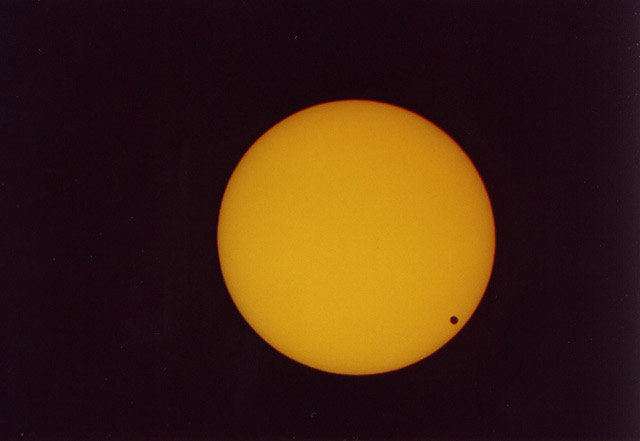An imminent astronomical phenomenon is extremely rare
On June 6, 2012, there will be a once-half-a-century average event, providing invaluable data for scientists on the journey to hunt for planets in the vast universe.
>>>Jupiter and Venus together converge
It is a phenomenon of a small black dot that will appear on one side of the sun for several weeks and slowly pass through the solar disk for a few hours. The movement of that small black dot seems insignificant, but this is one of the rarest scenes in astronomy, an event called the "transit" of Venus.
If you ignore this time, you have to wait until 2117 to see it again. The last time Venus went through the sun was from the 1600s.
The nearest neighbor of the Earth and night still stands in line with Jupiter, which will provide scientists with important data in studying the worlds of orbiting distant orbits.

In the past two centuries, there have been 4 times "Venus" in transit through the sun.
'This transit is very special because this will be the last time in our life we have the opportunity to collect data about a particular planet like Venus ,' said scientist David Crisp working at the Lab. Jet engine test says.
Venus, with its sparkling beauty in the night sky and its connection to Roman love goddesses, is actually a world that is not pleasant. The surface temperature of 460 degrees Celsius and the dense atmosphere of carbon dioxide burned or crushed all spacecraft that landed here. The surface of Venus is covered by dense sulfuric acid clouds.
In the past, Venus was thought to be a brother to Earth because of the size and orbit around the sun, but it seems that Kim is more like hell.
However, in terms of research, the rare transit of Venus will provide important data to help astronomers test the techniques they are developing to study the atmosphere of exoplanets. - worlds around another sun - and found places with life-supporting factors like oxygen and steam.
- Extremely rare eclipses happen this afternoon
- Rare astronomical phenomenon: Asteroids overwhelm the star
- Rare phenomenon: Thousands of
- Mercury passes through the Sun - a rare astronomical phenomenon is about to take place
- Waiting for the amazing phenomenon - the most amazing total solar eclipse 99 years
- Extremely rare wolf moon appears all over the world
- The moon 'eat' Moc Tinh
- The rare black moon phenomenon will appear on the evening of September 30
- 12 amazing astronomical phenomena cannot be missed in 2016
- Rare real Japanese swept across 3 continents
- Astonishing image: Mercury passes between the Earth and the Sun
- One of the most fascinating astronomical phenomena in history will be extinct
 Van Allen's belt and evidence that the Apollo 11 mission to the Moon was myth
Van Allen's belt and evidence that the Apollo 11 mission to the Moon was myth The levels of civilization in the universe (Kardashev scale)
The levels of civilization in the universe (Kardashev scale) Today Mars, the sun and the Earth are aligned
Today Mars, the sun and the Earth are aligned The Amazon owner announced a secret plan to build a space base for thousands of people
The Amazon owner announced a secret plan to build a space base for thousands of people